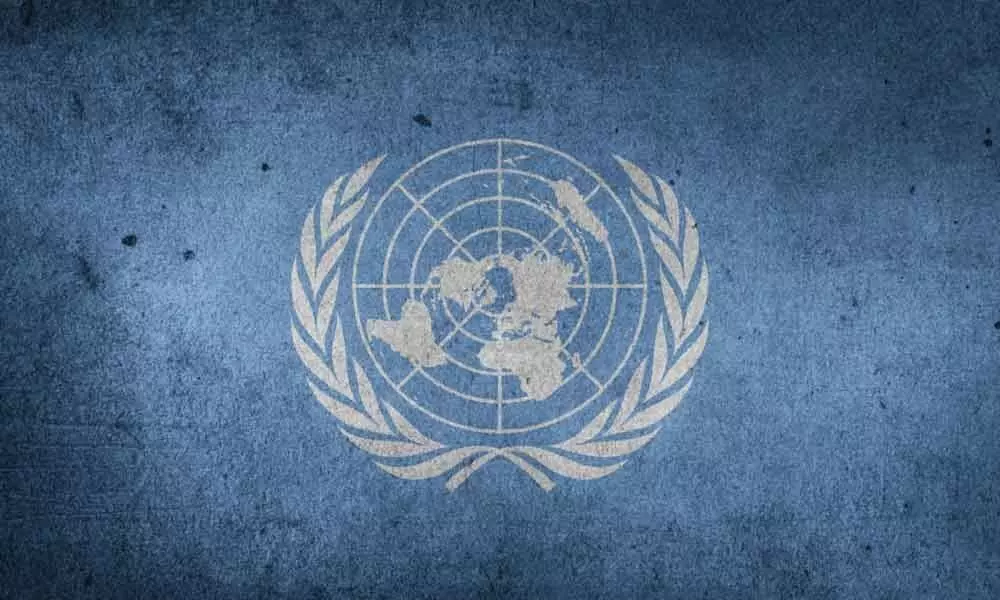Live
- Study Reveals Teabags Release Billions of Microplastics and Nanoplastics, Entering Your Body
- Kumbh Mela 2025: Essential Guide to Comfortable and Respectful Attire for Maha Kumbh
- Hyderabad Real Estate Faces Setback: Property Sales Drop 7% Year-on-Year in 2024
- Gnani’s Gen AI Solutions Revolutionising BFSI
- Trump's WHO threat sparks debate on the efficiency of global health governance
- ICC Champions Trophy 2025 Schedule: India vs Pakistan Match Set for February 23 in Dubai
- Champions Trophy 2025: Full Schedule, Match Dates, Venues, Timings, and Updates
- FRAI Urges Government to Provide Technology Platform for Kirana Stores to Stay Competitive
- Not just Gen Z, millennials too: Redditors discuss the wave of pet parenthood embraced by young Indians
- Innovation can expedite the journey to a Smoke-Free future- in focus at Technovation Abu Dhabi
Just In
Ecological connectivity to be focus of UN meet on wildlife


The theme of a major UN wildlife conference dedicated to migratory species in India early next year will be 'Migratory species connect the planet and together we welcome them home', it was announced in Bonn on Tuesday.
New Delhi (IANS): The theme of a major UN wildlife conference dedicated to migratory species in India early next year will be 'Migratory species connect the planet and together we welcome them home', it was announced in Bonn on Tuesday.
Under this theme, governments, scientists, conservation groups and wildlife experts will gather at the 13th meeting of the Conference of the Parties to the Convention on Migratory Species (CMS COP13) due to take place in Gandhinagar in Gujarat from February 15 to 22.
The theme was announced by CMS Acting Executive Secretary Amy Fraenkel and Inspector General of Forest at the Ministry of Environment, Forest and Climate Change Soumitra Dasgupta during COP13 preparatory meetings currently underway in Bonn.
Throughout their life cycles and migration ranges, migratory animals depend on a functioning network of connected habitats across countries and continents to breed, feed and rest.
The COP13 theme highlights the importance of ecological connectivity to better protect migratory wildlife and their habitats.
Ecological connectivity is the unimpeded movement of species and the flow of natural processes that sustain life on earth.
The loss and fragmentation of habitat are the key threats to migratory animals across the world. They are also considered to be the greatest threats to biodiversity worldwide with climate change exacerbating these effects.
In a world that faces a continuous decline in biodiversity with migratory animals being a key component, ecological connectivity is essential to halt and reverse this trend.
The CMS has called for the concept of connectivity to be integrated into the new Global Biodiversity Framework, which will be adopted at the end of next year in China.
Fraenkel said: "The CMS COP13 is expected to be a milestone for future conservation policy. To save nature in an increasingly fragmented world, the core concept of connectivity needs to be incorporated in global conservation efforts and should be embedded in the new deal for nature."
Dasgupta said the CMS COP13 would be an important opportunity for India to showcase and demonstrate its leading work and commitment to global wildlife conservation.
"We look forward to welcoming the international delegates to India and to working with them to make the planet a more hospitable place for both migratory animals and people."
The human footprint has left lasting marks on the planet. Roads, railways, fences and urbanization are increasingly cutting through landscapes and dividing nature.
They interrupt the web of life and prevent migratory animals from completing their essential journeys.
Nevertheless, the world is expected to invest around $90 tn in infrastructure in the next 15 years alone, resulting in more new roads and railways. These obstacles to migration interrupt the natural life cycle of migratory wildlife and pose a lethal danger.
The UN global assessment on biodiversity and ecosystem services, released by IPBES in May, documented the dramatic decline of biodiversity in all parts of the world.
Without increased action, over 1 million species could face extinction in our lifetimes.
As environmental changes grow, countries around the world need to save and restore natural connections across land and water. These connections enhance resilience to environmental changes such as climate change and support nature and people.
The CMS brings countries together to shape transboundary policies that ensure the long-term survival of migratory animals across countries and continents.
It is the only convention that conserves migratory species and their habitats across national boundaries.
To be successful, large-scale conservation must consider entire migration systems and the functioning of the migration process itself. The geographic scope goes beyond protected areas or sites subject to other conservation measures, to include an ecological network of areas important for the survival of species.Preserving large landscapes and seascapes affects many people and requires international collaboration. There is a rapidly growing community of organizations working on large-scale conservation initiatives in landscapes and seascapes built on connectivity.
They connect people and nature across cultures, jurisdictions, and geography.
The Convention on Migratory Species is working closely with governments, international organizations, conservation groups, and wildlife experts to ensure that connectivity. Conservation will be a central part of future global conservation policy and that the unimpeded movement of species and the flow of natural processes will continue to sustain life on earth for generations to come.

© 2024 Hyderabad Media House Limited/The Hans India. All rights reserved. Powered by hocalwire.com






